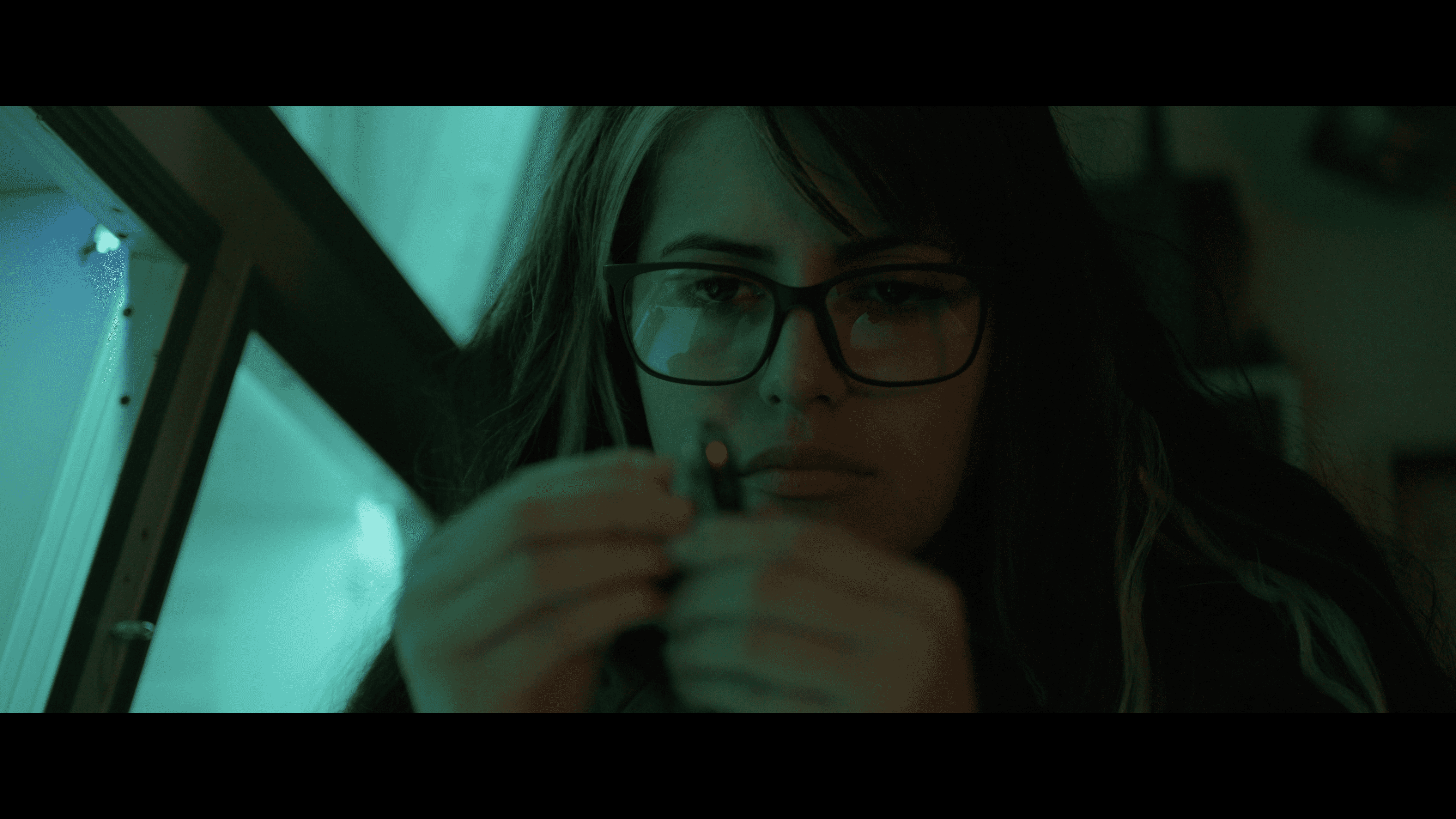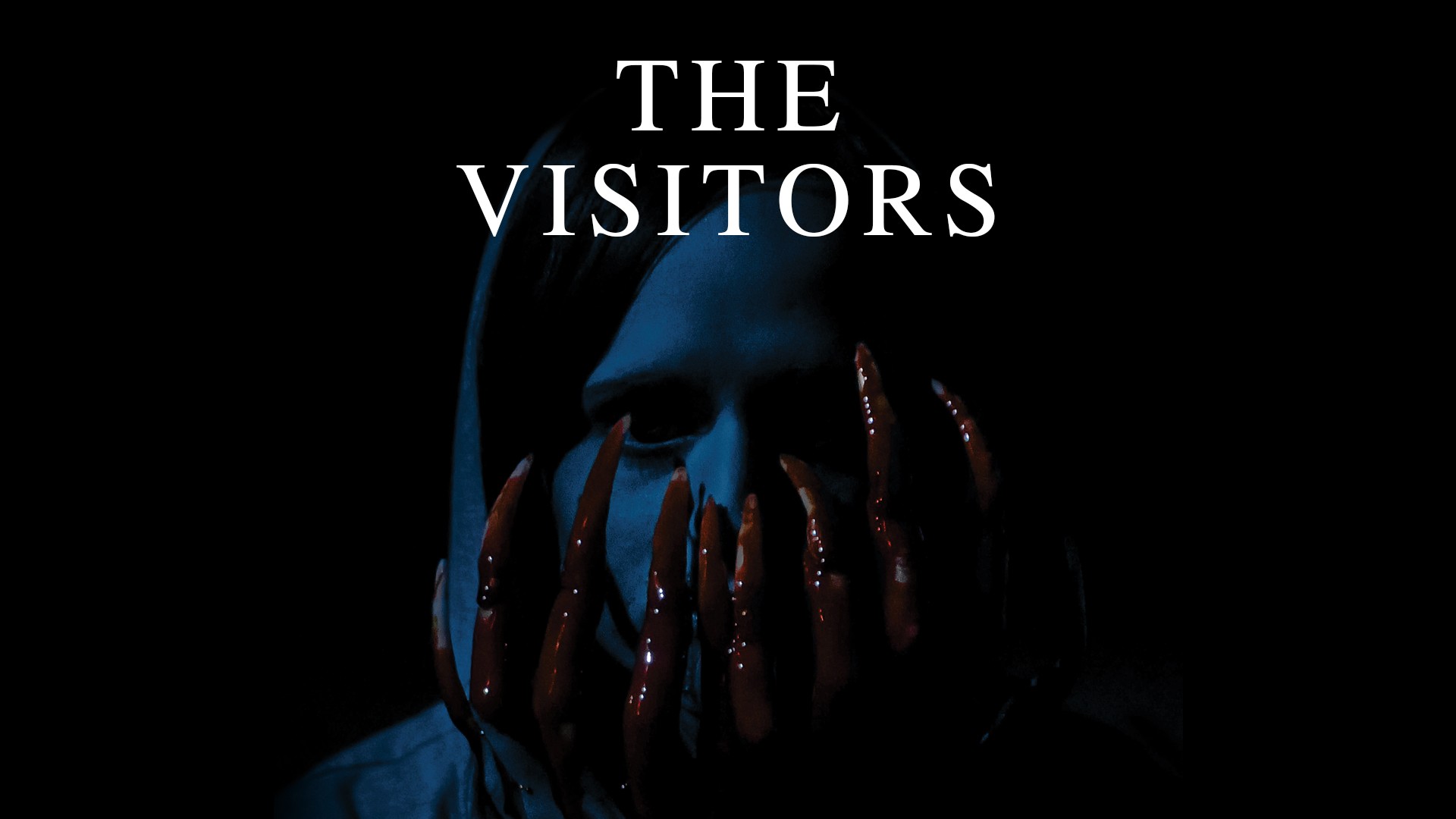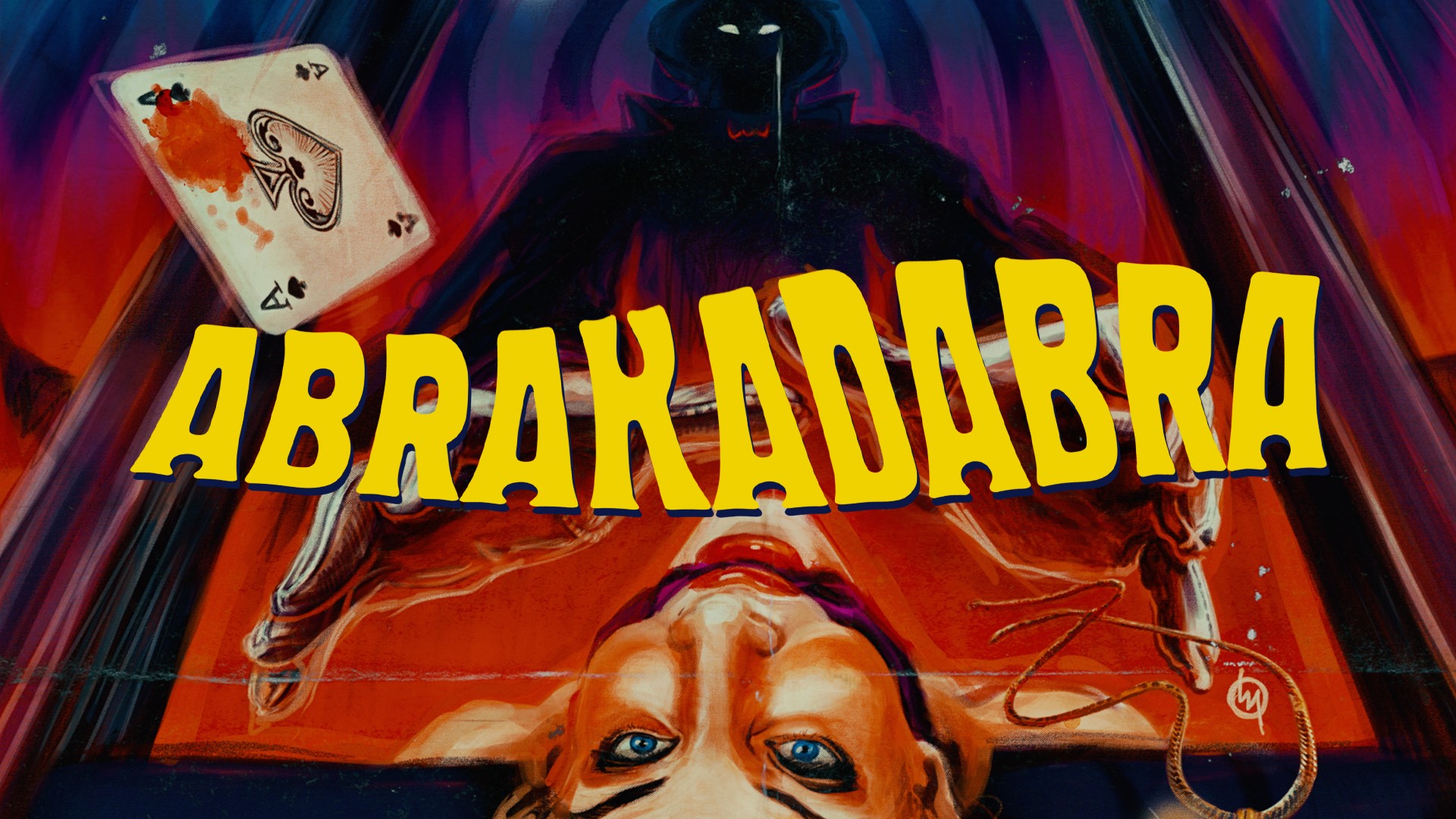Micro-Budget Horror That Distributors Want in 2025

At Cosmic Films, we track acquisition patterns specifically for filmmakers working under $1 million.
When Skinamarink grossed over $2 million worldwide from a $15,000 budget, or when Terrifier launched a franchise empire from $35,000 in crowdfunding, they weren't flukes.
They were proof that micro-budget horror can compete with studio productions.
Most horror filmmakers aren't working with million-dollar budgets and recognizable actors. They're shooting in their childhood homes, crowdfunding on Indiegogo, and casting local actors.
But certain sub-genres consistently generate distributor interest at the micro-budget level while others get ignored regardless of execution quality.
Understanding which sub-genres succeed at true micro-budget levels (under $1 million, no-name talent) versus which require bigger resources is the difference between finding distribution and having your film collect dust.
Let's take a look at what works when you're making horror for under $500K and using limited locations with actors nobody's heard of yet.
Atmospheric Found Footage
Kyle Edward Ball's Skinamarink represents the most significant micro-budget horror success story of the past two years.
Made for $15,000, shot in his childhood home in Edmonton, and using borrowed equipment from a nonprofit film co-op, the film was acquired by IFC Films and Shudder after premiering at Fantasia Film Festival in 2022.
It grossed over $2 million at the box office and broke streaming records on Shudder.
Why This Sub-Genre Works at The Micro-Budget Level
Found footage and POV horror eliminate expensive production requirements while allowing filmmakers to create genuine atmospheric dread.
Skinamarink's success came from understanding that you don't need elaborate sets or effects, you need sustained atmosphere and genuine unsettling imagery.
The film essentially recreated childhood nightmares using a single location, minimal cast (the kids are barely visible), and creative camera angles that suggested horror rather than showing it.
This approach turned budget limitations into creative advantages. Viewers couldn't see what was happening because that's exactly what makes it scary.
Current Distributor Demand
Following Skinamarink's success, distributors are actively seeking atmospheric found footage that brings genuine innovation to the format.
The key is conceptual justification: why is this being filmed? Ball's film worked because it presented itself as an investigation into a disturbing phenomenon, giving narrative reason for the unusual camera perspectives.
Shudder's VP of Programming Samuel Zimmerman specifically cited Skinamarink as "the best kind of horror movie, one unlike any other" when announcing the acquisition.
This signals distributor appetite for POV horror that feels genuinely different rather than repeating familiar found-footage tropes.
Production Realities for Micro-Budget Filmmakers
Skinamarink demonstrates what's achievable with minimal resources:
Single location (filmmaker's childhood home)
Borrowed equipment from film co-ops
Minimal cast (children barely visible on screen)
Creative camera work suggesting horror rather than showing expensive effects
Heavy atmosphere through sound design and composition
The film's viral spread after being leaked online actually helped build audience anticipation, demonstrating how micro-budget horror can use unconventional paths to reach audiences.
IFC Films' theatrical release came after the film had already generated significant social media discussion.
What Distributors Want at This Level
Atmospheric found footage horror needs distinctive visual approaches and sustained dread.
Generic found footage gets rejected instantly. Distributors need films that generate discussion and feel genuinely different.
Skinamarink's experimental structure and childhood nightmare concept gave it clear differentiation in crowded markets.
For filmmakers working under $50K, this sub-genre offers the most viable path to distribution because it turns budget constraints into atmospheric advantages.
Practical Effects Slashers
Damien Leone's Terrifier proved that practical effects-heavy slashers could build franchises from tiny budgets.
Made for $35,000 through crowdfunding and producer support, the film launched a series that has now grossed over $100 million collectively.
The original Terrifier had no major actors, just David Howard Thornton in a breakthrough performance as Art the Clown.
Why Micro-Budget Slashers Work
Horror audiences consistently prefer practical effects over CGI, making slashers achievable at tiny budgets for filmmakers with makeup effects skills.
Leone, a former special effects makeup artist, created Art the Clown's look and the film's gore himself, demonstrating how technical skills can substitute for budget.
The original Terrifier grossed $421,798 theatrically despite its tiny budget and no-name cast. More importantly, it built cult following that led to Terrifier 2 ($250,000 budget, $15.7 million gross) and Terrifier 3 ($2 million budget, $87 million gross).
This franchise potential makes micro-budget slashers attractive to distributors looking for long-term IP.
Current Market Dynamics
Following Terrifier's success, distributors like Cineverse are actively seeking practical effects-heavy slashers that can build franchise potential.
The key is creating memorable villains and signature kill sequences that generate social media discussion and rewatchability.
Terrifier succeeded because Art the Clown became instantly iconic. The silent clown aesthetic combined with extreme violence created shareable imagery that spread organically through horror communities.
This viral potential makes distributors willing to take chances on micro-budget slashers with distinctive villains.
Production Requirements
Successful micro-budget slashers require:
Strong practical makeup effects capabilities
Distinctive villain design that becomes a marketing asset
Creative kill sequences that generate word-of-mouth
Willingness to push boundaries with violence and gore
Small cast and limited locations to concentrate budget on effects
Leone's background in special effects meant Terrifier could achieve professional-looking gore on a minimal budget.
For filmmakers without these skills, collaborating with makeup effects artists or learning techniques yourself becomes essential.
Distribution Path
Terrifier found initial distribution through Epic Pictures Releasing for limited theatrical in 2018. The film built a cult following through home video and streaming, eventually generating enough interest to support bigger-budget sequels.
This demonstrates how micro-budget slashers can grow into valuable franchises.
Single-Location Supernatural Horror
While we're focusing on sub-$1M examples, the single-location supernatural horror model consistently generates distributor interest at various budget levels.
The key is understanding what makes these films work at true micro-budget scale.
Why Single Locations Work
Haunted house, cabin, or apartment horror eliminates expensive location scouting and permits while creating inherent claustrophobia that enhances scares.
Films can invest more in atmosphere, sound design, and performance direction when they're not spreading budget across multiple locations.
Supernatural Acquisition Pattern
Platforms are actively seeking atmospheric ghost stories and haunting narratives.
Recent acquisitions consistently feature:
Single primary locations (houses, apartments, isolated buildings)
Small casts (2-6 characters maximum)
Emphasis on atmosphere over expensive effects
Supernatural elements that don't require elaborate CGI
Production Advantages
Single-location horror allows micro-budget filmmakers to:
Negotiate better deals on single location rentals
Control lighting and sound more effectively
Invest in quality sound design and atmospheric elements
Focus on strong performances without logistical complications
Achieve professional look within severe budget constraints
The key is choosing locations with inherent atmosphere.
Old houses, isolated buildings, or spaces with distinctive character that enhance rather than require extensive art department work.

Technical Skill as a Budget Substitute
While Stopmotion had a budget around £905,000 ($1.1M) from British Film Institute funding, it demonstrates how specialized technical skills can create distributor interest in unique horror approaches.
The film was acquired by IFC Films and Shudder after premiering at Fantastic Fest.
The Technical Skill Advantage
Filmmakers with animation, makeup effects, or other specialized technical skills can create horror that stands out through craftsmanship rather than budget.
Director Robert Morgan built his reputation through acclaimed horror shorts using stop-motion animation, proving his technical capabilities before attempting a feature.
What This Means for Micro-Budget Filmmakers
If you have specialized skills, like stop-motion animation, practical creature effects, or advanced makeup work, you can create horror that differentiates through technical achievement rather than budget.
Distributors value craft and innovation, especially when combined with horror storytelling.
The lesson isn't to make stop-motion horror specifically, but to utilize whatever technical skills you possess to create something audiences haven't seen before.
Unique technical approaches generate press coverage and festival interest that can lead to acquisition even at tiny budgets.
What Doesn't Work at Micro-Budget Levels
Understanding what fails at micro-budget levels helps filmmakers avoid expensive mistakes and focus resources on viable approaches.
Creature Features Without Practical Effects Expertise
Monster movies require either professional-quality practical effects or expensive CGI.
Amateur creature effects instantly signal low quality to distributors, making these films nearly impossible to sell regardless of other strengths.
Unless you have legitimate makeup effects skills, avoid creature-focused horror at micro-budget levels.
Period Horror
Period settings require authentic costumes, props, and locations that quickly exhaust micro budgets.
Even slight period inaccuracies signal low quality to distributors and audiences. Contemporary settings allow focus on scares rather than period authenticity.
Generic Haunted Houses or Possession Stories
Distributors see hundreds of haunted house and possession films every year.
Without distinctive hooks or genuinely innovative approaches, these films get rejected regardless of execution quality.
The bar for haunted house horror is high. Yours needs clear differentiation to generate interest.
Action-Heavy or Effects-Dependent Horror
Extensive action choreography, chase sequences, or elaborate effects sequences typically exceed micro-budget capabilities.
Focus on psychological horror, atmosphere, and tension rather than expensive set pieces.
Micro-Budget Production Strategies That Work
Understanding which production approaches succeed at micro-budget levels helps filmmakers maximize limited resources while maintaining distribution viability.
Location Strategy
Successful micro-budget horror uses locations filmmakers can access for free or minimal cost:
Your own home or family/friend properties
Abandoned buildings (with proper permissions)
Single apartments or houses rented for short periods
Outdoor locations requiring no permits
Skinamarink used the director's childhood home. Terrifier used limited locations with most action in warehouse spaces.
This location efficiency allows budget concentration on elements that directly impact scares.
Cast and Performance Direction
Micro-budget horror typically uses non-professional actors or early-career performers willing to work for minimal pay and backend participation.
Success requires:
Extensive rehearsal to maximize limited shooting time
Focus on naturalistic performances over theatrical acting
Casting actors comfortable with horror content and requirements
Clear direction that helps inexperienced actors deliver quality performances
Technical Quality Standards
Distributors reject films with:
Poor sound design or inconsistent audio levels
Inadequate lighting creating muddy, unclear images
Amateur color correction/grading
Shaky handheld footage without stylistic justification
Invest in professional sound mixing and color correction even if shooting with minimal equipment.
These technical elements separate "micro-budget with potential" from "amateur unmarketable."
The Crowdfunding and Community Building Approach
Many successful micro-budget horror films used crowdfunding not just for financing but for building a core audience that supported the film through release.
Crowdfunding as Marketing
Successful horror crowdfunding campaigns create communities invested in the film's success.
These initial supporters become:
Word-of-mouth marketers sharing film with horror communities
Built-in theatrical audiences in major cities
Social media amplifiers generating organic reach
Proof of concept for distributors evaluating commercial potential
Terrifier's crowdfunding supporters became the film's initial cult following, generating buzz that eventually attracted distributor attention and led to franchise opportunities.
Most Micro-Budget Horror Doesn't Sell
Understanding failure rates helps filmmakers make informed decisions about project viability before investing time and money.
Why Most Micro-Budget Horror Gets Rejected
Distributors reject micro-budget horror for:
Inadequate technical quality (poor sound, lighting, color)
Generic concepts without differentiation
Amateur performances that break audience immersion
Lack of genuine scares or atmosphere
Running times under 60 minutes (limited commercial opportunity)
Rights issues or incomplete legal documentation
The Quality Threshold
Micro-budget doesn't mean low quality.
Skinamarink and Terrifier both achieved professional technical standards despite tiny budgets. Films need to look and sound professional enough that audiences can ignore production limitations and engage with the story.
Conclusion
Creating marketable micro-budget horror requires understanding the specific sub-genres that work at this level, the technical standards distributors demand, and the acquisition pathways that connect micro-budget films with distribution opportunities.
Recent indie successes prove that smart filmmakers can compete with studio productions by choosing appropriate sub-genres and executing with genuine skill.
At Cosmic Films, we encourage micro-budget filmmakers to:
Focus on sub-genres that work at your budget level: Atmospheric found footage, practical effects slashers, and single-location supernatural horror offer the best odds at micro-budget scale.
Invest in technical quality: Professional sound design and lighting separate marketable films from amateur projects. These aren't negotiable for distribution consideration.
Build genuine scares: Budget can't substitute for understanding what makes horror effective. Study what works in successful micro-budget horror and apply those lessons to your specific concept.
Use your unique skills: Technical capabilities in makeup effects, animation, or other specialized areas can differentiate your micro-budget horror from generic competitors.
Your horror film's success depends on understanding market realities while executing your unique vision with skill and professionalism.





